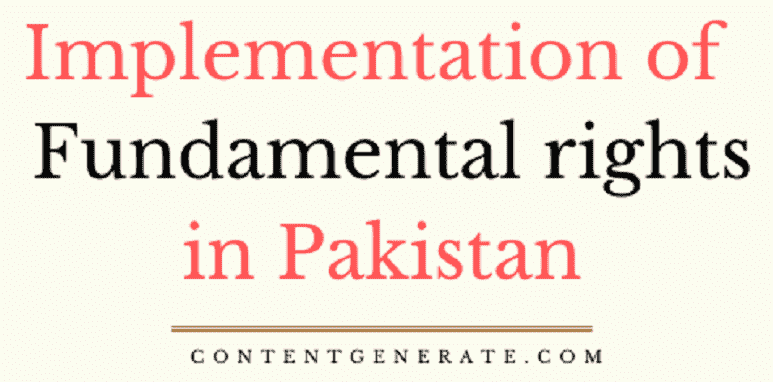Pervez Musharraf’s Economic Policy – Main Features and Impact

Contents
This article is about the main features of Pervez Musharraf’s economic policy that he had adopted during his rule from 1999 to 2008.
What were the main features of Pervez Musharraf’s economic policy?
The salient features of Musharraf’s economic policy included liberalization, privatization, foreign direct investment, industrialization, improvement of irrigation and transportation system.
1. Liberalization
General Pervez Musharraf introduced the Economic Regulations Program (ERP) with a view to liberalize the national economy according to the requirements of the World Trade Organization (WTO).
Under this program, the Musharraf regime opened the economy for international trade and foreign direct investment. For this purpose, the government brought a rapid reduction in both export and import duties. He removed quota, surcharges, and other regulatory duties related to imports.
2. Privatization
With an aim to improve the GDP rate, Musharraf launched a rigorous program of privatization. His regime attempted to sell all state-owned companies i.e. PTCL, KESC, PIA, Pakistan Railways, etc. He also pushed for the complete privatization of the banking sector.
By the end of the year 2007, the Musharraf regime had sold out 80% of the banking industry into private ownership. Likewise, the government sold out a number of shares of Pakistan International Airlines (PIA) plus other major corporations into the private sector.
Impact of privatization
The privatization initiated by the military resulted in a rapid increase in economic growth right from the beginning. For instance, Musharraf had started his privatization process in 2003. By the end of the year 2004, the economic growth was at a range of 8.90 to 9%. However, the average growth rate for the subsequent years till 2007 remained at 6.4-8.6%, a relatively significant improvement in retrospect.
As Musharraf privatized more and more institutions, the number of major public sector organizations started to shrink.
Another immediate positive effect that the country saw as a result of the privatization was a sharp drop in the inflation rate. For instance, it fell to 3.5% which was above 10% before the privatization program started.
Judicial activism against privatization
Musharraf’s privatization program came to an apparent end at the end of 2007 because of the apex court’s suo moto actions against the privatization drive. This halted the privatization program in the country.
The Supreme Court of Pakistan issued orders to halt the privatization of Pakistan Steel Mills while hearing an FIA registered case. With issuing orders to stop the privatization program, the court also transferred inquiry from FIA to NAB.
The intervention on behalf of the supreme court put an end to the further privatization of national institutions in Pakistan for the remaining years of Musharraf’s rule.
3. Foreign Direct Investment (FDI)
What is Foreign Direct investment?
The term Foreign Direct Investment refers to an investment that an individual or a company makes in business interests located in another country. More simply, one can say, “FDI refers to the investment by an individual or company in business interests located in a foreign country”.
The investor may have his own business or he may purchase business assets or shares of a company in a foreign state. Sometimes, people confuse the concept of Foreign Direct Investment with Portfolio investment. In reality, they are two different concepts and business approaches. In contrast to FDI, an investor merely purchases equities of foreign-based companies.
Encouragement of Foreign Direct Investment in Pakistan
According to a Dawn News report, the Musharraf regime encouraged Foreign Direct Investment as part of its economic policy. In this regard, development was made in two sectors of oil & Gas and Telecommunication. The government failed to attract and diversify the FDI inflows in other sectors.
4. Liberalization
Musharraf opened the economy to the outside world. To encourage foreign and local investment, the military regime provided a number of incentives to the investors.
A. Tariff reduction and removal
Musharraf reduced from 80% to 25% the tariff on both export and import items. Similarly, in 2005, the government removed tariffs on items of different kinds i.e. sugar, vegetables, livestock, cement. Moreover, the government removed the licensing conditions and government monopoly in imports as a formal requirement. Tariffs that were considered as a source of revenue for the government were replaced by tax administration reforms.
B. Free provision of land
Musharraf provided free-of-cost land on lease for a period of 10 years. Similarly, the government also provided security of life and property to foreign companies and individual investors.
C. Trade agreements
In order to materialize the policy of liberalization, the military regime of Musharraf signed regional and bilateral agreements with 46 countries. The agreements signed were aimed at promoting and safeguarding the investment. In this regard, Pakistan also signed the South Asian Free Trade Agreement (SAFTA) in 2004 to promote regional trade.
Impact of foreign direct investment
Pakistan had received more than five billion dollars in 2007 and witnessed a record increase in foreign reserves. The inflow of dollars that country witnessed helped in improving the balance of payment (Trade deficit).
With increased investment, industrialization was encouraged. Increased industrialization led to the increase in commerce and business activities that in turn created more and more job opportunities.
The economy seemed to have boomed. The economy was the third fastest-growing after India and China. In 2007 and 2008, Pakistan received a revenue collection of Rs. 1.002 Billion. This was a record increase and helped increase foreign reserves and improve the balance of trade.
5. Encouragement towards the production of value-added goods
Musharraf encouraged the manufacturers to produce value-added products so that smart earning of foreign exchange could be ensured.
In this regard, he allotted land around Port Qasim for the establishment of industries to facilitate quick transport of goods and reducing time and transport cost that could have been consumed while transporting from a faraway place. Moreover, the government provided exemption in duties on the export of value-added goods. Major Industrial estates were being developed under Musharraf’s vision: M3 industrial, Sundar industrial estate, Chakri industrial, etc.
Impact
The manufacture of value-added products led to the increase in foreign exchange earnings and improvement in the balance of trade. According to the Economic Survey 2005, poverty decreased by 10.56% between 2001 and 2005. The GDP per Capita increased to $1000 in 2007. The industrial sector registered 26 percent growth. A historic 100% increase in tax collection (amounting to Rs. 1 trillion) was observed. Exports in 2007 were worth $18.5 billion where Textile exports in 2007 were worth $11.2 billion.
6. Improvement in irrigation
Pakistan is basically an agricultural country. Crop cultivation completely depends on irrigation. The main source of irrigation is River Indus and its tributaries that drain Indus plain throughout Sindh and Punjab.
Unfortunately, Pakistan has been observing a continuous shrinkage in the water volume with the passage of time. To fix this issue of water shortage, the Musharraf regime built five dams i.e. Mirani Dam, Sabakzai Dam, Gomalzam Dam, Khurram Dam, Tangi Dam. With these interventions, Musharraf was able to address water-related issues to a greater extent.
7. Improvement in transportation
Pervez Musharraf also took measures to improve the transportation system of Pakistan. There were seven motorways completed or under construction by the time of Musharraf’s resignation in 2008. Similarly, it was during the Musharraf period that Gwadar Port developed as an advanced seaport.
Impact of transport up-gradation
Musharraf’s interventions in the transportation system of the country brought a reduction in traffic congestion and travel time. Now people could travel more distance in less time.
Moreover, it helped increase commerce and business activities which are primarily dependent upon efficient transportation systems. The development of motorways helped decrease transportation costs and travel time.
Criticism
Though the economy performed well under General Pervez Musharraf, some quarters describe the development as temporary and a result of cosmetic measures.
According to Musharraf’s critics, the economic performance more because of the luck factor and political changes in the region and the world. To say in other words, the development did not occur due to any deep structural change brought by the government.
Demerits of Musharraf’s economic policy
The greatest demerits of Musharraf’s economic policy was that the poor section of the population little benefitted from the pick-up in the economic growth rate. The beneficiaries of the phenomenal increase in the GDP were still the affluent and industrial class.
This was because o the fact that the sectors seeing the growth had little to do with the low-income people. For instance, Foreign Direct Investment provided a boom to the real state sector which is not a job-creating sector.




